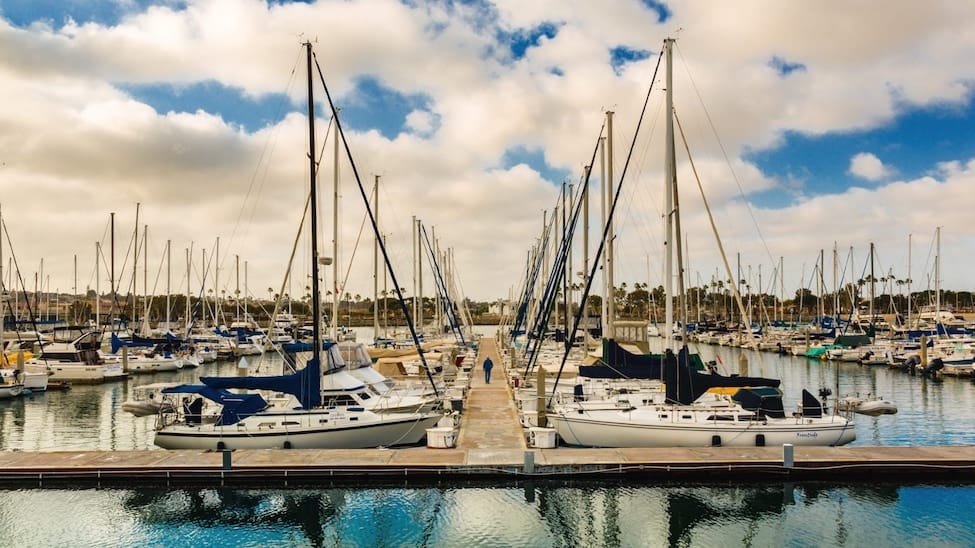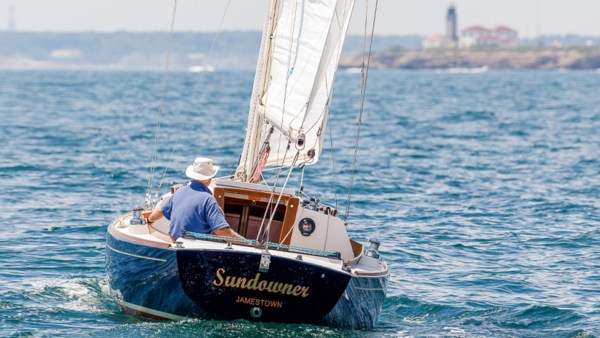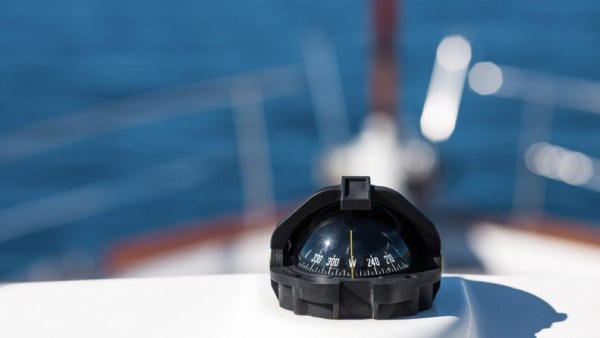I will let you on a secret. I bought my first bought before I knew how to sail. But, I wanted to sail my entire life, and every time I walked through the marina, I would gaze at the sailboats. I would do my internal math to compute the affordability of owning a sailing vessel. I asked myself all the right questions.
- Could I afford it?
- How would I learn to sail?
- Are there any slips available?
- Do I need insurance?
- Do I need a license?
- Will I use the boat enough to make it worthy of the investment?
Well, I did it. I bought a 1977 Catalaina 27 for $3500 from a guy moving out of state. It was a quick sale. He took me out on the water. We sailed around the marina. I was hooked.
I loved that boat; however, since I didn’t get a marine survey on the vessel, I didn’t realize she had a few issues. First, the outboard engine was practically useless. The bottom needed new paint. Third, every window leaked if it rained. A bilge pump was non-existent. You get the point.
I kept that Catalina 27 for five years and sailed her every week. She made me fall in love with sailing. That old boat was relentless in showing me how much I could get out of a simple boat, good wind, and the time to perfect my sailing.
But…I could have used some advice when buying her. In hindsight, I needed some direction.
Learning To Sail Is Just The Beginning
Learning how to sail can be a gratifying experience, but it’s just the beginning of the journey for those who fall in love with the sport. Buying a sailboat is the natural next step for those who want to take their passion to the next level. However, purchasing a sailboat can be a daunting task for first-time buyers. To make the process smoother, here are some steps to consider after you have completed your ASA 101 Basic Keelboat Sailing and ASA 103 Coastal Cruising courses and are considering buying your own sailboat.
Determine Your Budget
Determining your budget is the first and most critical step when considering buying a sailboat. Sailboats can vary significantly in price, depending on the size, age, and condition. Consider your personal financial situation, including how much you can afford to spend upfront and how much you can afford in ongoing maintenance and operating costs. A rule of thumb is to allocate about 10% of the boat’sboat’s value annually for maintenance, repairs, and upgrades. You will have instances when significant issues arise. These will blow your budget projections out of the water.
Determine Your Needs
Before purchasing a sailboat, you must determine what you want to do with it. Do you want to race or cruise? Do you plan to sail alone, with a partner, or with family and friends? What is your experience level, and what type of sailing conditions do you plan to encounter? Answering these questions will help you narrow down the type of sailboat that best suits your needs. Do you eventually plan on doing some bareboat chartering? If you are paying for a boat monthly, does that hamper your ability to save for the big sailing vacation?
Do Your Research
Once you know what you’re looking for, it’s time to do your research. There are countless resources available that can help you understand the different types of sailboats available and their features. You can also read reviews and check out forums to see what other sailors say about particular models or brands. Additionally, you can attend boat shows, talk to brokers, and even ask for recommendations from fellow sailors. There is a major difference between buying a new boat and purchasing a used sailboat. Bells and whistles can be added later, and cosmetic issues can also change with pricing.
Inspect the Boat
Once you’ve found a boat you’re interested in, inspect it thoroughly to ensure it’s in good condition. You should hire a marine surveyor to inspect the boat for you. A marine survey is an inspection of the boat by a professional surveyor. It will provide you with a detailed report on the boat’s condition and any issues that must be addressed. This is a critical step to ensuring the vessel you purchase is worth the asking price. It would be best if you did not assume that you can inspect a boat properly unless you yourself are a marine surveyor. This is too important of a task to skip.
Make an Offer
If you are satisfied with the condition of the sailboat, it is time to make an offer. Work with your broker or the seller directly to determine a fair price based on the boat’s condition, age, and market value. Include any contingencies in your offer, such as a satisfactory survey, sea trial, or financing. Be prepared to walk away if the price does not fit your budget.
Find a Slip
If the vessel remains in the water, you must ensure the boat has a slip in the marina. Take care of that detail before you close the deal. If you are trailering the boat, make sure you have a location to store your boat.
Close the Deal
Once you and the seller agree on a price and any contingencies, it is time to close the deal. This typically involves signing a purchase agreement, paying a deposit, and transferring funds. It’s recommended to work with a reputable broker or attorney to ensure all the paperwork is completed correctly and the transaction is legal and secure.
Start Sailing!
Congratulations! You’ve successfully purchased your sailboat. Now it’s time to enjoy it. Spend time on the water, get to know your new boat, and hone your sailing skills. Join a local sailing club to connect with other sailors and learn from their experiences. Then, enroll in more sailing courses and practice, practice, practice! Owning a sailboat can be an incredible experience, and with the proper preparation and research, you can find the perfect boat to match your needs and budget.













